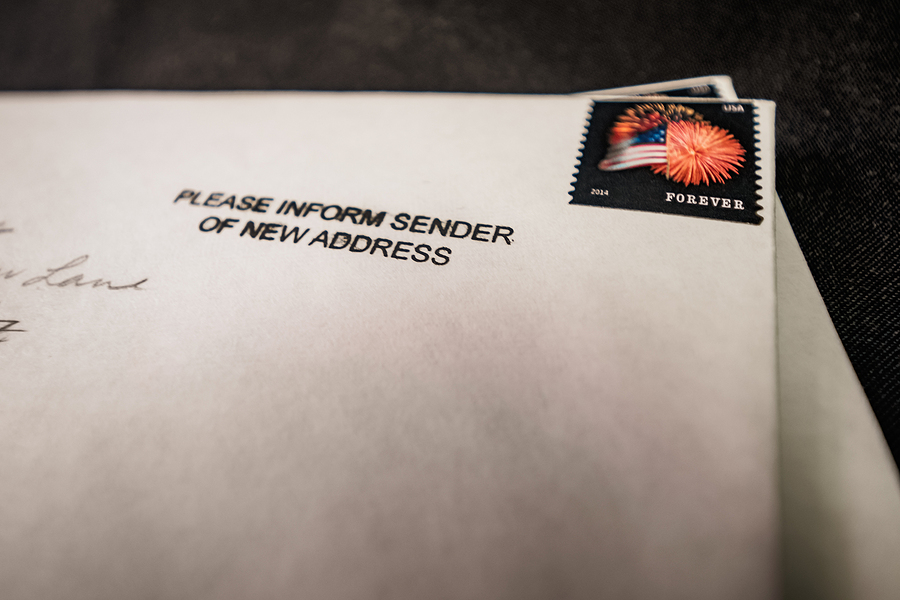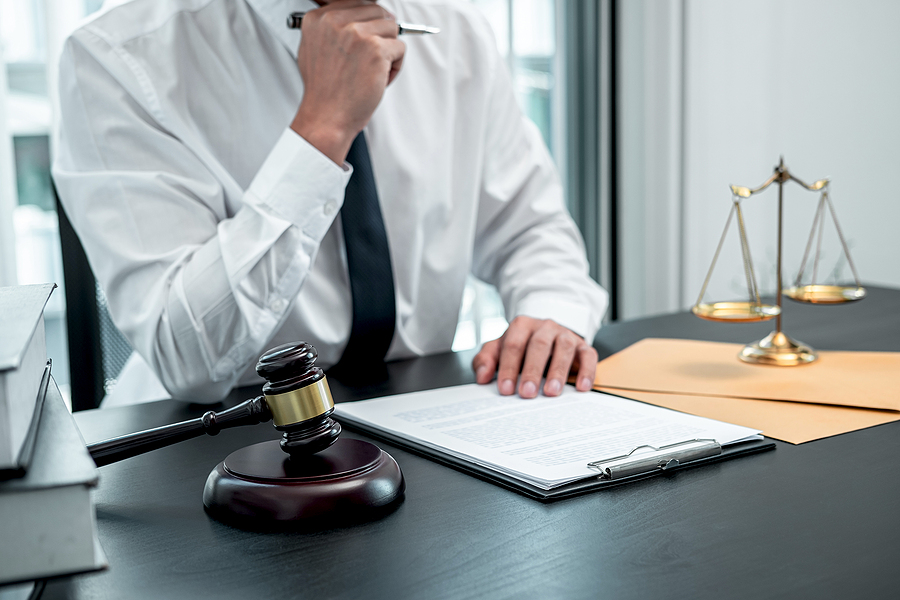What if My Bank Account or Address Has Changed Since My Last 9/11 Benefits Payment?

The Census Bureau reports that the average American moves once every five years. The majority of these moves involve changing residence within the same county. However, others involve moves to another part of a state, a different state, or abroad. What if My Bank Account or Address Has Changed Since My Last 9/11 Benefits Payment?
One common item on a moving to-do list, especially for moves further than across town, is changing where you bank and, in turn, updating your bank account information on all of your other financial accounts.
If you receive compensation from the September 11th Victims Compensation Fund (VCF) and change your bank, it’s important to update your account information with VCF immediately to prevent interruption of your payments. Read on for information about the proper way to change your address or banking information to ensure you continue to receive timely VCF benefits.
How Are VCF Funds Paid?
VCF pays benefits to participants through electronic direct deposit to their regular checking or savings accounts. Payments come from the U.S. Department of Treasury via the Automated Electronic Clearinghouse (ACH) electronic payment system.
What Is the ACH Network?
ACH is an electronic funds transfer system that has been run by the National Automated Clearing House Association (NACHA) since 1974. It facilitates bank-to-bank money transfers by eliminating the time and effort of issuing paper checks or other forms of payment. The ACH Network carries transactions between businesses, between citizens and the government, or between businesses and consumers.
Here’s how ACH payments work:
- The originator starts the transaction by accessing the ACH network electronically. The originator’s bank, known as the originating depository financial institution (ODFI) takes the transaction, along with other ACH transactions, batches them together, and sends these transactions out at regular times throughout the day.
- An ACH operator—such as a Federal Reserve or clearinghouse worker—takes the batches of ACH transactions and makes them available to the transaction’s intended recipient, which is known as the receiving depository financial institution (RDFI).
- The recipient receives the money in his or her bank account, thus reconciling both accounts and ending the process.
The information required by the NACHA for the transaction to go through includes:
- Your name
- Routing/ ABA number
- Account number
- Whether the bank account is for business or personal use
- The transaction amount
Formerly, the ACH process took two to three business days to complete, meaning that transaction recipients would have to wait that long after the payment was issued to see it reflected in their account. However, in recent years, the NACHA has ushered in a three-phase project that will allow recipients to receive the money within the same day that it was sent.
Filling out a New VCF ACH Payment Information Form
A successful ACH transaction requires your account number and bank’s routing number. When this information changes, your payment can get kicked back to the Treasury Department as your previous account and routing numbers no longer allow deposit access.
Because of this, if you have changed bank accounts or your address since your last payment, you should immediately print and fill out a new ACH Payment Information Form.
The form requires:
- The name, address, and telephone number of the holder of the account in which the payments will be deposited.
- The name of the individual who is entitled to receive the payment.
- The claimant’s social security number.
- Type of depositor account. You must state whether your account is a checking or savings account.
- Depositor account number. This is the number for the bank account that you will use to receive the payment.
- Claimant’s VCF claim number.
- Payee/ Joint Payee certification. The claimant will be required to sign the form, and if there is a joint account holder for the account where the award is received, the joint account holder is encouraged to also sign and signify that they understand that they are required to promptly notify the VCF if the claimant dies.
- Information to be filled out by a representative of the financial institution where you bank. The information necessary for this section of the form includes the financial institution’s full name and address, routing number, all names associated with the account holder’s account, the printed or typed name of the representative as well as his or her signature, the telephone number for the financial institution, and the date on which the representative filled out and signed the form.
VCF recipients are asked not to submit their address or account information changes online. Instead, you must print and fax the form or mail it to the VCF along with a cover letter stating that the information provided should replace the banking information that the agency has on record.
What Happens if You Live Outside the U.S. and Need to Change Your Bank Information?
VCF recipients who live outside of the U.S. and have changed banks will also need to update their ACH payment information. To do this, you should download and print the International Wire Transfer Request Form. This form requires essentially the same information as the form used by VCF recipients living in the U.S.
Note: If you use an online bank, contact a representative to arrange for someone to fill out the financial instructions part of the form. Remind the representative that whoever fills out the form must also sign and date it for the change to be valid.
Changing Information for a Law Firm Escrow Account
Many law firms assisting individuals with filing a VCF claim will provide a law firm escrow account on behalf of the client to receive the client’s payments. This is particularly helpful for claimants who do not have a bank account of their own to use, as the VCF only makes direct deposits.
If you opted to have your VCF payment deposited directly into an escrow account provided by your attorney to be disbursed to you within 30 days of receipt, you cannot change this payment method. This method is typically the safest way to ensure that you get paid correctly and timely. Most reputable 9/11 law firms will have a track record of smoothly handling hundreds if not thousands of VCF claims and have in place the correct ACH payment forms and information for the VCF (by the US Treasury) to make payment of an award. If the ACH forms and information on them is not 100% correct or if there is information missing or a mistake, then the claim will not be paid (or sent to the wrong person).
Informing the VCF of Claimant’s Death
If a VCF claimant receiving compensation through a jointly held account dies, the surviving joint account holder is responsible for informing the VCF as soon as possible of the death. If the deceased’s beneficiaries wish to continue receiving compensation, a personal representative named by the deceased or appointed by the court can seek wrongful death compensation by filing a new claim. Wrongful death compensation, however, is only available if the death was related to a 9/11-associated medical condition that the WTC Health Program has certified or qualifies for certification.
Changing Your Address Only for Your VCF Payment
If you have only changed your address but not your account, you do not need to file a new ACH Payment Information Form. However, you do need to notify the VCF so that they can update their records. To do so, call the VCF Helpline at 1-855-885-1555 for assistance or ask an experienced 9/11 compensation attorney from Hansen & Rosasco to help you.
About the VCF
The September 11th Victims Compensation Fund (VCF) was initially formed in 2001, shortly after the terrorist attacks on 9/11 to provide compensation to those most devastated by the events of that day. The original VCF was shuttered in 2004, only to be reauthorized for funding in 2011 through the James Zadroga 9/11 Health and Compensation Act.
The rebooted program featured expanded eligibility guidelines, and was authorized to operate through 2016. President Barack Obama reauthorized the program in 2015 with caps on the compensation individuals received. These caps were $250,000 for those who endured cancer because of exposure to the toxic dust plumes at the affected attack sites, while claimants with non-cancer diagnoses were capped at $90,000 for compensation.
In 2019, the program was permanently authorized and funded when President Donald Trump signed The Never Forget Our Heroes: James Zadroga, Ray Pfeifer, and Luis Alvarez Permanent Authorization of the September 11th Victims Compensation Fund. The 2015 version of new law also provided reauthorization and funding of another 9/11 benefit program, the WTC Health Program. This program provides medical treatment and monitoring for individuals who meet the dates of exposure for a 9/11-related illness and also provides the certification mechanism that enables claimants to prove to the VCF that their medical condition is related to 9/11.
Because of the permanent reauthorization, the VCF allows victims of 9/11 toxic exposure who are now suffering from related illnesses or those who have lost a loved one to a 9/11-related illness who have registered with the VCF to file a claim any time before October 2090. Registration with the VCF must take place within two years of the 9/11-related death or certification of a 9/11 related illness. If there was never a WTC Health Program certification, then the registration deadline, for all practical purposes, is 2090.
See if you are eligible today!
Related Posts

When Can I Expect to Receive My VCF Payment

How Long Can My 9/11 Attorney Hold Onto My Award Payment Before Sending It to Me? | Hansen & Rosasco, LLP

